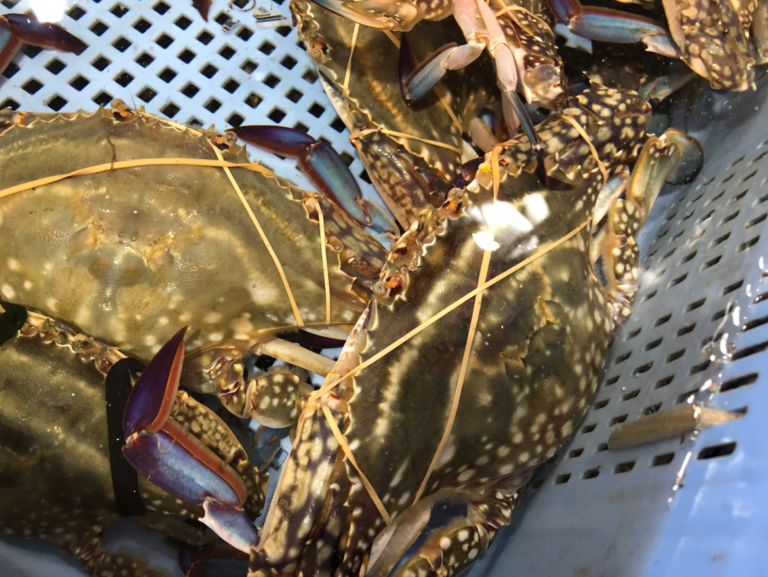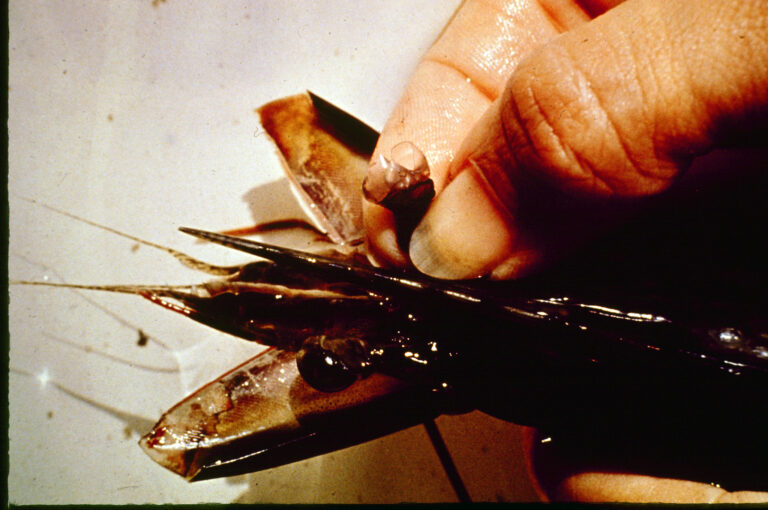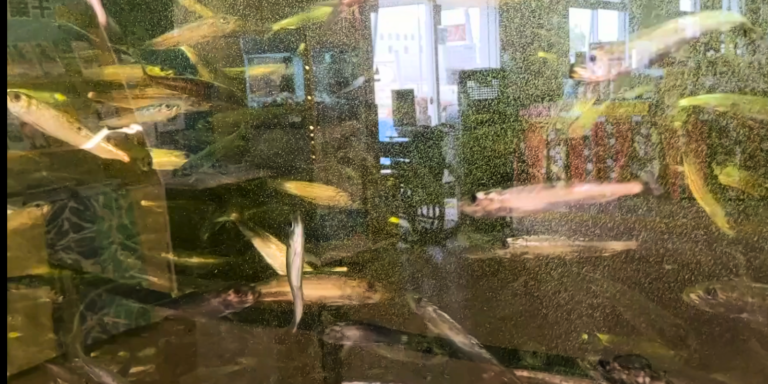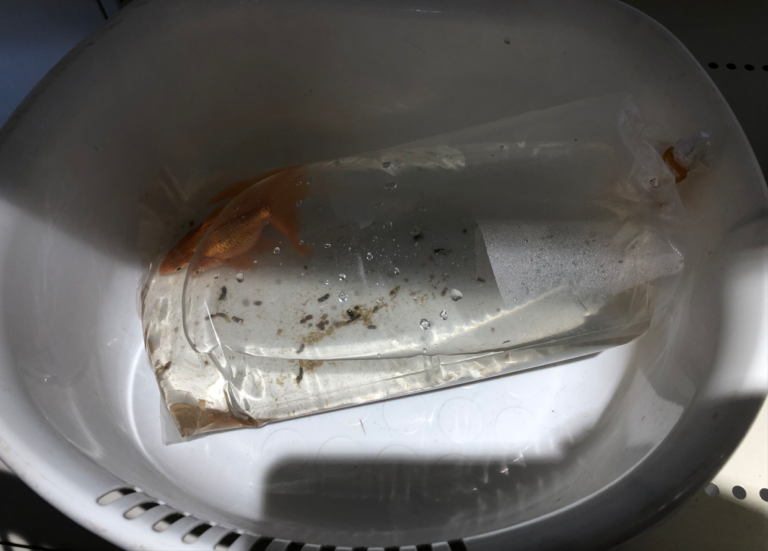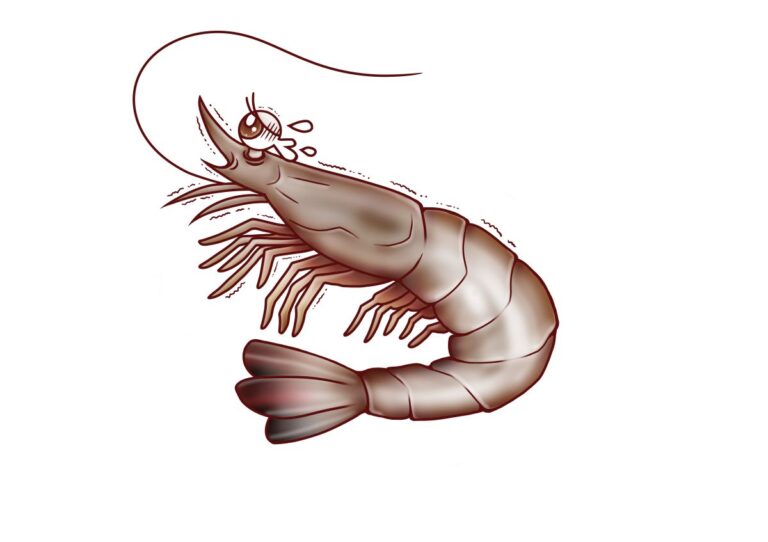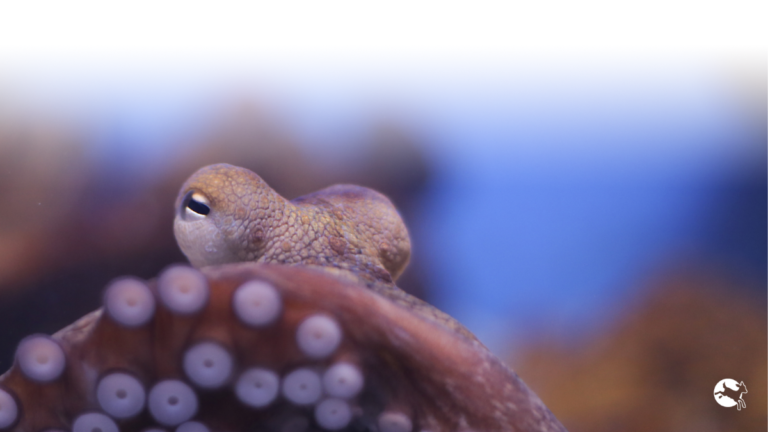Until now, ARCJ has been raising awareness about aquatic animals, especially crustaceans, about “ethical” killing and cooking methods, and has made inquiries to shops that are too terrible. These live fish dishes were not seen at one time due to the corona disaster, but the state of emergency has lifted, and sales of live crustaceans and fishes are resuming to gather crowds at large supermarkets and tourist spots for example. The crabs in the photos were being sold at a souvenir shop at a roadside station in a rural area. They are palm-sized crabs who live in the warm waters of Japan and are sold under the names of gazami crabs.
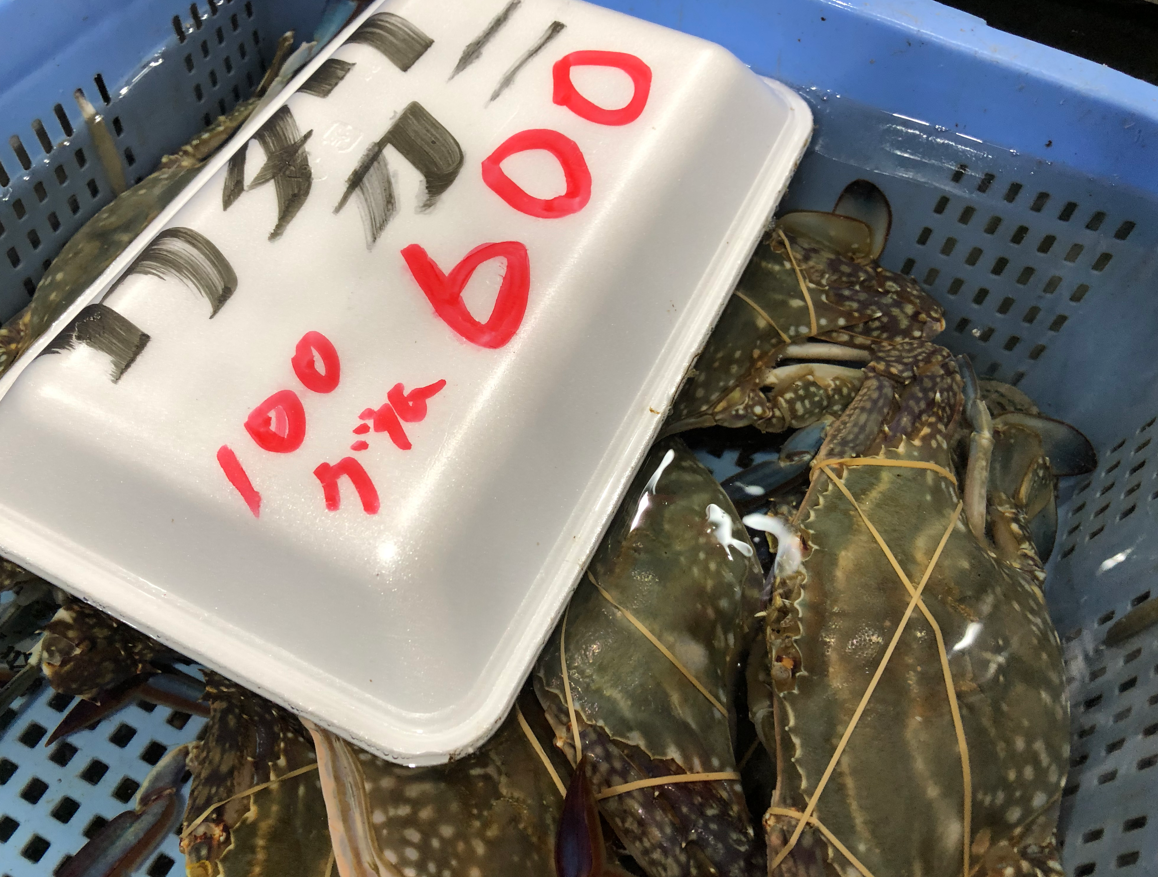
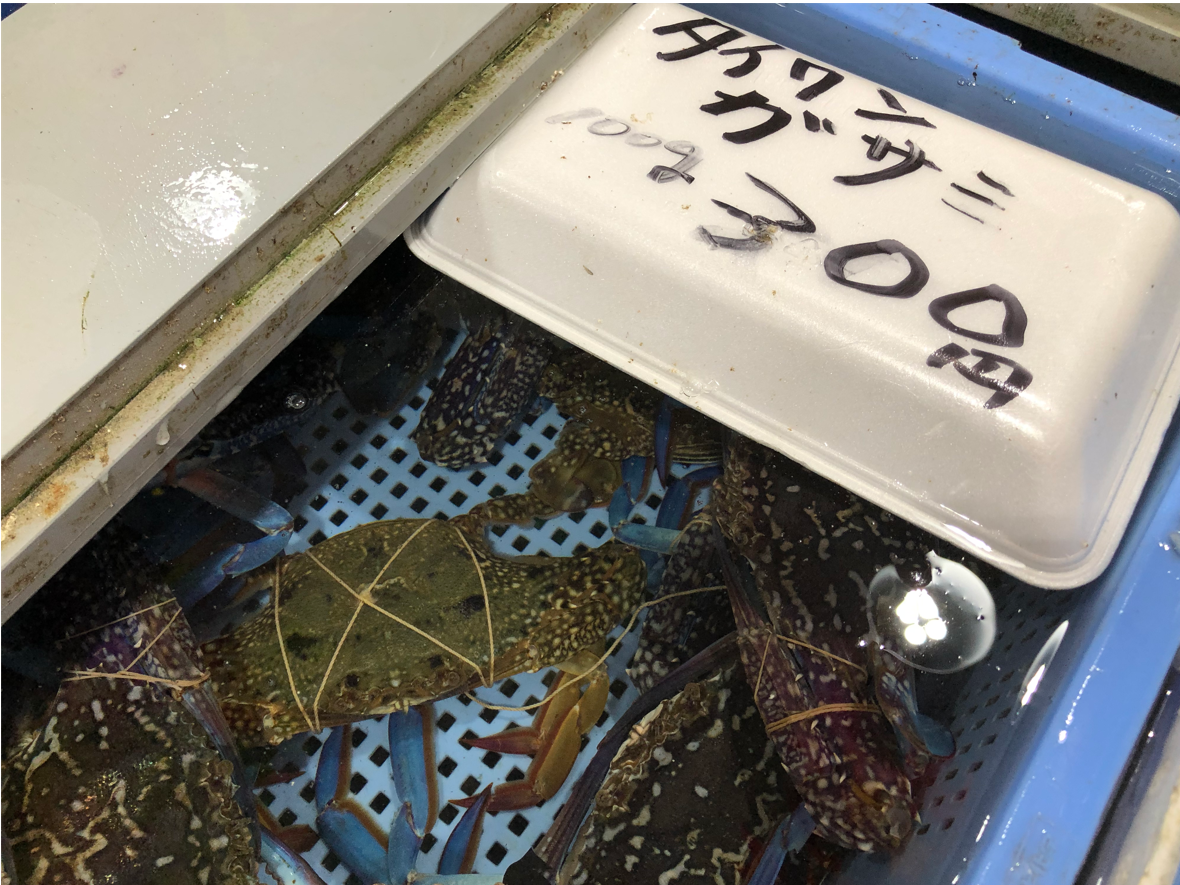
Live cooking methods that afflict crabs to the maximum
The site that introduces how to eat these gazami crabs says, “The recommended dish is steamed crab. They’re delicious in the order of grilled> steamed> boiled. The simple and delicious is when steamed. They cut off their legs by themselves. If you put the shells down in the steamer and put them upside down, the flavors will not flow out easily. Sprinkle a little liquor and steam for about 20 minutes”. In addition, chopped with kitchen scissors, skewered and grilled, and boiled at the beach, crabs for food suffer much pain before they die. Don’t crustaceans and fishes feel pain? Is there a way to kill them without suffering? If you have any objections or doubts, please refer to the ARCJ’s past articles listed at the end of the text.
Live fish sales = exhibition sales
This time, we will focus on how crustaceans are sold. These crabs were caught in nearby seas and sold in stores with their legs restrained and immobile. However, they’re not popular food for tourists, and only few passers-by would buy these crabs, just looking and touching them, especially children. In short, it is difficult to cook them as food unless you are a professional cook. Still, the crabs, of course, are not given anything to eat, and they are left alone for a few days as long as they are alive, with only scarce seawater.
Crustacean killing becoming entertainment
However, in the case of aquatic lives, we don’t even see the venders trying to hide them, and their “last days” are rather exposed to the public. In particular, crustaceans such as shrimps and crabs are barbecued alive or put in pots. In other words, killing itself is entertainment. As you can imagine even if you have never eaten it, there are very few edible parts in palm-sized crabs, and rather than killing to fill your stomach, boiling and boiling alive is an entertainment, as a memory from a trip. By showing the live crabs to the customers, the stores invite the customers saying, “This product allows for the pleasure of killing creatures”.
It must be said that ARCJ has ethical issues in making the last days of these aquatic lives entertaining. No, not just animal protection groups, but even ordinary persons should be reluctant to chop live crabs at home or throw them into boiling water. Because that is the normal human sense.
Ethics dulled on the road
However, that normal feeling seems to be diminished by the extraordinary feeling of traveling and eating out. As explained in a past ARCJ website article, it is difficult to cook to kill crustaceans and fishes so as not to make them suffer as much as possible, and it is not something that an amateur traveler can do. If one sells crabs for food, cooking professionals should kill them before selling them so that they don’t suffer.
Why they shouldn’t be sold alive
Even without laws, one can see if you think about it, but this is why one shouldn’t sell crabs and shrimps alive. One is that the tanks are inadequate and don’t qualify for rearing, and it is an exhibition sale that continues to restrain them. Second, if sold alive, laypeople will kill them in crude ways to eat, making the last day of the aquatic lives even more dire.
So we ethical consumers must call out businesses that think they get more crowd by selling live crabs as a spectacle than to sell dead crabs. If it’s difficult to speak up your opinions on the spot, you can do so by phone or email after you get home. Improving the last days of crustaceans, who are being sold in the worst ways on earth for consumption, is an action anyone can take.
Indifference toward lives of crustaceans
However, the road to improvement is very steep … ARCJ is currently conducting a #エビの命も大事キャンペーン #ShrimpsMatter campaign to improve the breeding method so as not to cut the eyes of farmed shrimp. The response is more challenging than for livestock animals. The number of people who say “because livestock animals are for food” has decreased recently, but for shrimps, there are people who are wondering why such a campaign is done even though they are for food. However, it also means raising awareness about shrimps and crabs also leads to improving bottom-up the last days of other animals.
* The past ARCJ website articles related to crustaceans:
About dishes that cruelly kill crustaceans:
https://arcj.org/issues/fish/crustacean-kill/
How crustaceans are cooked. Comparison with overseas:
https://arcj.org/issues/fish/fish984/
Dishes cruelly killing fishes:
https://arcj.org/issues/fish/aqua692/


